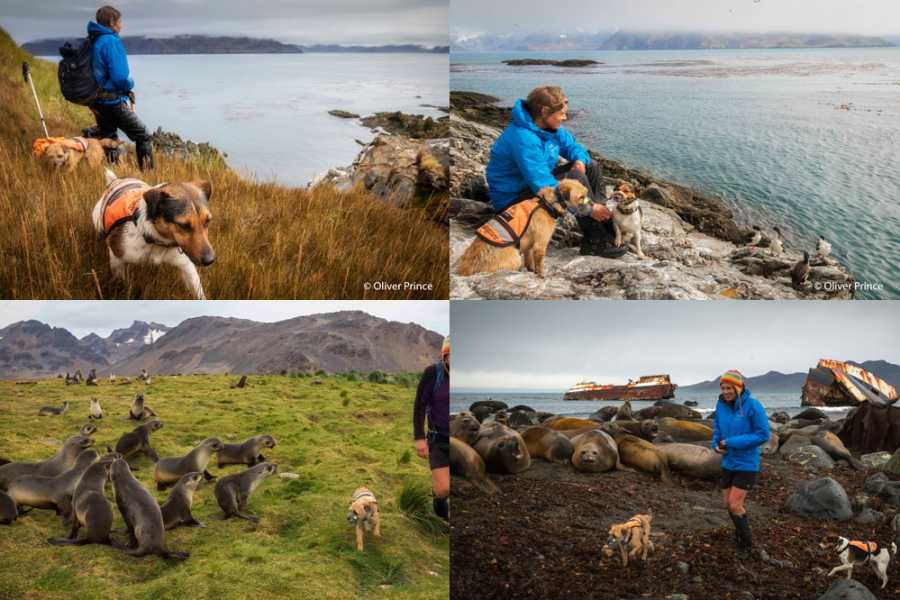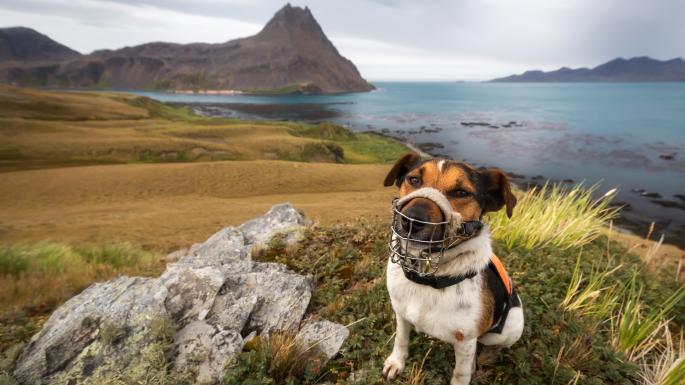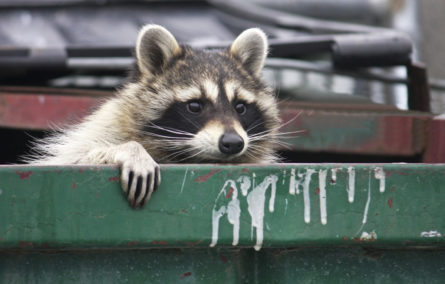Detection Dogs Assist in Rodent Eradication Project
Three dogs have joined the eradication project on the British Overseas Territory of South Georgia

Three small dogs are at the center of the final phase of the world’s largest project to eradicate invasive species. Terriers Wai, Will and Ahu have joined a team of 16 humans deployed by the South Georgia Heritage Trust (SGHT) to conduct a monitoring survey of the British Overseas Territory of South Georgia for signs of rodents. Thanks to significant funding from Friends of South Georgia Island (FOSGI) and with personnel and logistical support from the Government of South Georgia & the South Sandwich Islands, the Trust has embarked on what is hopefully the final phase of its ambitious 7.5 million pounds conservation project to restore the island’s native bird populations.
The terriers are specially trained to detect rodents, invasive predators which arrived on South Georgia as stowaways on sealing and whaling vessels from the 18th century onwards. As the native wildlife evolved in the absence of rats and mice, the introduced rodent population wreaked havoc on the island’s ground-nesting and burrowing birds, in particular threatening the existence of two endemic species; the South Georgia pipit and South Georgia pintail.
Scottish-based charity SGHT started the first phase of baiting of the Habitat Restoration Project – to date the world’s largest project to eradicate invasive species – in 2011, in a bid to reverse two centuries of human-induced damage to the island’s wildlife and allow millions of birds to flourish and reclaim their ancestral home. Since the last extensive phase of baiting work in 2015, no sign of rodents has been detected, and many bird species are already showing signs of recovery, but a comprehensive survey was required before the island could officially be declared rodent-free.
With its complex terrain of glaciers, deep crevasses, dramatic mountains, and storm-swept beaches, as well as unpredictable weather conditions, the sub-Antarctic island of South Georgia is one of the most remote and inhospitable places on Earth. In an incredible feat of endurance and teamwork, reminiscent of Sir Ernest Shackleton’s epic crossing of the island just over a hundred years ago, the dogs and their two female handlers, Miriam Ritchie and Jane Tansell, have so far walked a total of 1415km, with the dogs covering a total of 2124km, searching for signs of rats. The distance will continue to mount as the monitoring survey progresses, but they have already surpassed the equivalent of the trek from Land’s End to John O’Groats, which at 1407km covers the whole length of the island of Great Britain.
Like Shackleton before them, Ritchie and Tansell are unfazed by the scale of the task. This involves sub-sampling a coastline almost a thousand kilometres long and a vegetated land mass of 895 km2 . Ritchie explains: “The size of the survey area is vast, and the dogs stay close to us, but of course they can detect smells from many meters away, so they help increase the range of what is actually covered on foot. They can also get to areas that are inaccessible to humans, such as nooks and crannies in the landscape, or within the former whaling stations.”
Ritchie and her colleague Tansell are extremely experienced dog handlers from New Zealand and are used to working in remote environments. Tansell has a veterinary nursing qualification and both of the women have worked as handlers with the New Zealand Conservation Department and have trained a number of detection dogs, including brothers Wai and Will, and their cousin Ahu.

Ritchie says: “All three of the dogs have a lovely, calm temperament and are very quiet around birds. Their training is as much about ignoring other smells, as it is about recognizing rodent odor. South Georgia is famous for its vast penguin colonies and thousands of seals, and the dogs’ noses are filled with the intense smells of these animals the whole time. They have to ignore all this and simply focus on, and react to, the one extremely weak smell of rodents.”
The SGHT field team, dubbed ’Team Rat’, started the monitoring survey in October 2017, and the handlers and their dogs joined in December 2017. The team has been supported by three vessels, including the MV Hans Hansson, which has been chartered by SGHT. The Trust has been particularly indebted to the Government of South Georgia & the South Sandwich Islands for the support of its patrol vessel Pharos SG, and to Thies Matzen and Kicki Ericson, the owners of the expedition yacht Wanderer III. Both have provided invaluable assistance.
In line with international best practice, the team has been using a combination of detection methods during the survey, so in addition to the detector dogs, they have also used special inert devices, such as chewsticks and camera traps. Over a thousand such devices have been deployed as part of the survey, which the field team will complete by the end of April.
SGHT plans to announce the outcome of the monitoring survey at a press conference in London in early May.
Dickie Hall, SGHT Project Director, says: “Following the baiting operation, there has been a remarkable and dramatic increase in the number and distribution of many bird species. The song of South Georgia pipits, the most southerly songbird, is now louder than the bark of elephant seals! However, this monitoring survey is essential before we can confidently declare South Georgia free of rodents.
“This survey has been the culmination of 10 years of planning and months of challenging field work over four sub-Antarctic seasons by an international team, led by SGHT. We are all on tenterhooks, waiting for the results as the survey nears completion. There is no room for error – we have to have eliminated every single last rodent if we are to save many vulnerable bird species like the South Georgia pipit from extinction.”
source: pctonline.com


